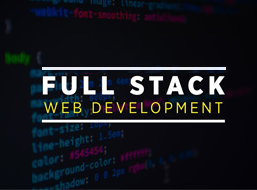Table of contents
|
1. Understanding the landscape of the UI/UX Design |
|
2. A Short Guide on How to Become a UI/UX Designer
|
|
3. Conclution |
The entry path for a UI/UX design may seem hectic, given the inevitable adjustments and requirements in the tech field. With businesses focusing increasingly on smooth digital experiences, the question of how to be a UI/UX Designer and what successful design practitioners require has become more interesting to many more people. The process begins with the realization of the key expertise, handy tools, and daily commitments of today's designers. So, what are the UI/UX designer key skills that every novice should consider?
Understanding the landscape of the UI/UX Design
It is important to preface the technical skills by knowing what the field is. Many individuals have been wondering what UX designers do on a day-to-day basis and day out. Simply put, the question is what a UI/UX Designer does. A UI/UX designer should create a product that is convenient to use, aesthetically pleasing, and can quickly deal with user issues. User Interface (UI) is concerned with the appearance and image, whereas the User Experience (UX) is concerned with how it all integrates.
A Short Guide on How to Become a UI/UX Designer
When you are wondering how to become a UI/UX designer, you can start a serious learning process by studying the basics of design: color, typography, composition, psychology of users, etc. Applying to an intensive UI / UX Designer Course in Bangalore or any other major city will not only accelerate the learning process but also allow working with the tools included in the industry.
1. The art of Visual Design
Good visual design is one of the most basic UI/UX designer competencies. This is more than beautification skills. A UI/UX Designer has to design interfaces that should be practical and user-friendly.
Typography and Color Theory
Knowledge of color contraries, font combinations, and spacing is a vital factor. The options you have on layouts and structure lead the user through their path. With the help of tools like Adobe XD and Figma, two of the most well-established UI/UX designer tools, it is now easier to experiment with the color scheme and fonts.
2. User Research and Compassion
It is not only the UX/UI about eye-catching screens. The ability of a designer to put himself/herself in other people's alignment is the only feature that can separate them from the rest. UX designers do research often: speak to users, conduct some kind of surveys, and observe them.
The Requirement Traceability User Needs
Learning to identify and address real problems is an important process for any potential designer. This implies that one should put forward individual preferences and concentrate on what customers desire and require. It is possible to identify patterns that lead to more informed decisions about design by using tools such as surveys and usability tests by UI/UX designers to get just enough information.
3. Wireframes and Prototyping
When you are wondering how to work being a UI/UX designer, understand that wireframing and prototyping are central to the design processes. Wireframes- these are simple drawings of a product that help the designers draw templates without adding images.
Building Prototypes
Prototypes convert such layouts into live working models which can be clicked upon. And you do not have to be a specialist coder; prototyping is no longer the province of complex and esoteric languages and tools: tools such as Figma and Sketch have opened prototyping to everyone who is prepared to learn. To receive more structured training, a UI/UX Designer Course in Bangalore will provide practical exposure to these activities.
4. Feedback and Usability Testing
No product is flawless initially. Testing plays a critical role with regard to UI/UX workflow. Early and frequent feedback is a big thing that most first-timers are oblivious to. It responds in real-time, answering the question of what UX designers do, which is to listen, iterate, and better.
The Feedback Cycle is important in the activities of Heroic Sailing because the feedback students give to the teachers helps the company move in the right direction.
The best designer is open to criticism. Record sessions, analyze heatmaps, and just learn everything directly based on what users do with the tools available in the UI/UX designer. Not only does it turn out to be a process that is able to improve products, but it also helps develop your instincts as a UI/UX Designer.
5. Communications and coordination
The activities of the UI/UX designers are highly related to developers, marketers, and business owners. As for technical skills, communication is important. It is the work of a designer to explain design decisions, understand the constraints of technical feasibility, and react to feedback.
Teaming-Working
Designed tools (such as Slack and Trello) are needed as much as the same amount as design tools. They assist you in managing tasks, updating the progress, and staying in line with everyone.
6. Knowing about new Tools
The design world is dynamic. It is necessary to be aware of the newest UI/UX designer tools like Figma, Adobe XD, InVision, and Sketch. Their benefits are different, and the most talented designers use some of them to determine their preferences.
Education is not over
By attending a UI/UX Designer Course in Bangalore or joining an online community, you expose yourself to updates, shortcuts, and new methods of doing things to stay one step ahead.
7. How to Design Accessibility
It is important to keep accessibility in mind as you are building your skills in UI/UX work. Knowing how to come up with inclusive designs expands your audience, not just because of compliance with international standards.
The Importance of Accessibility
Accessible design refers to the concept of designing products that would be usable by anybody, irrespective of whether he or she is able or disabled. These involve the provision of text alternatives to images, providing adequate color contrast, and making navigation with keyboards. Any aspiring UI/UX Designer should become aware of the accessibility rules, including WCAG (Web Content Accessibility Guidelines).
Accessibility Testing Tools
Accessibility evaluation of your designs can be done by using tools such as Axe or WAVE. The following practices allow not only to improve user experience on your websites but also contribute to equality on the internet. If you are a future-oriented designer, knowing about accessibility will help you stand out in the crowded field of design practices.
Conclution:
When one is new to the field and learns about how to become a UI/UX designer, they are bound to experience a bit of this confusion. The thing is that, in this sphere, learning never comes to an end. You can start with the essentials: learn UI/UX designer's primary features, study what UX designers do, and constantly practice on the latest UI/UX designer tools.
In case you prefer a more formal education, you can take a UI/UX Designer Course in Bangalore that combines theory, practical assignments, and a market-oriented peek. Anyone with dedication, the necessary skills, and an interest in problem-solving can become a successful UI/UX Designer.
And with these competencies and a learning attitude, you are so close to leaving your mark in the design world!
Apponix also provides a complete UI/UX Designer course in Bangalore because students acquire the necessary skills to become a UI/UX designer by doing practical work and working on real-life projects. Be taught by proven leaders in the field and become versed in the new tools and techniques. Boost your profession in design now! You can enroll and begin your way to becoming a UI/UX Designer today!





